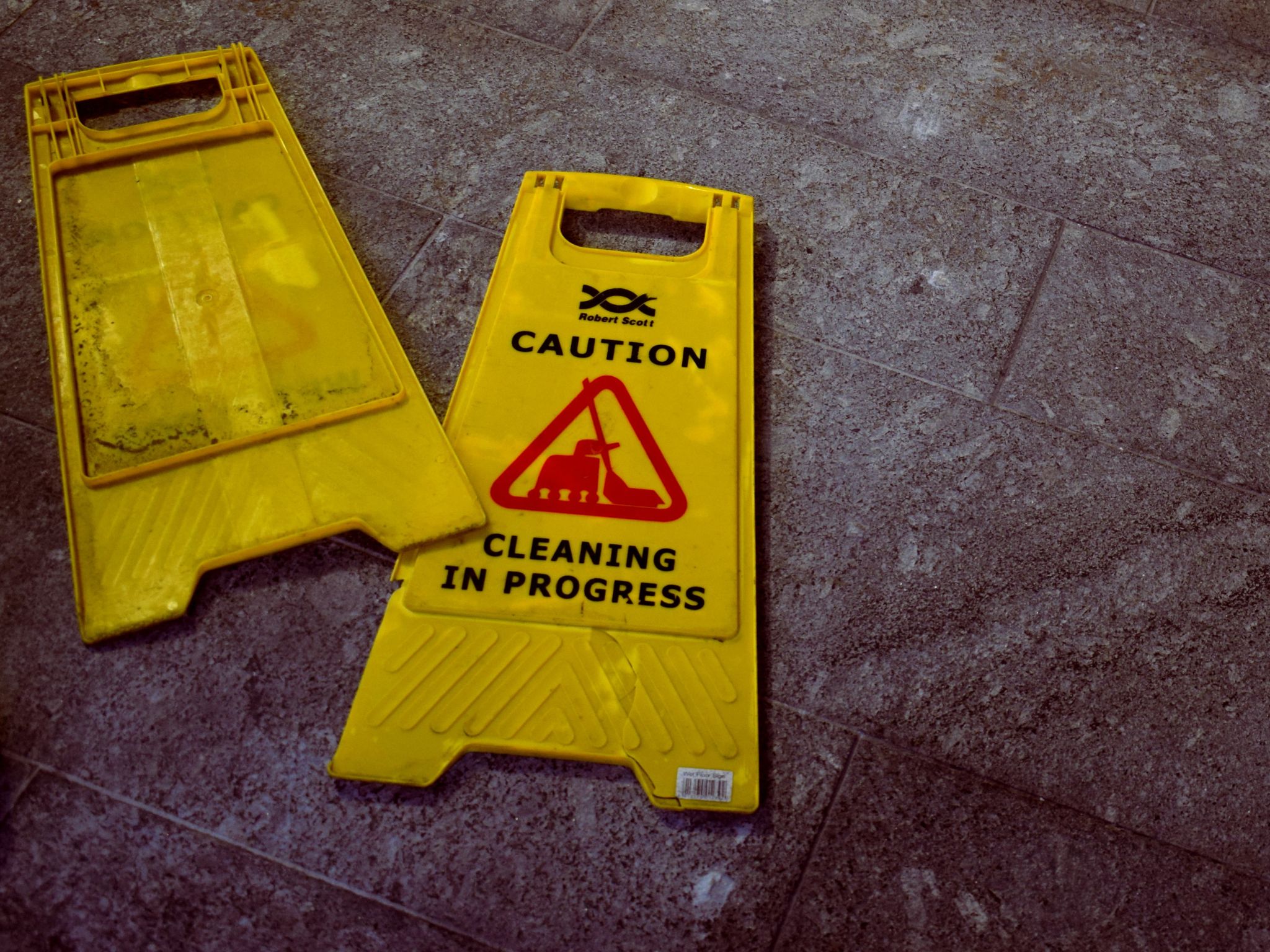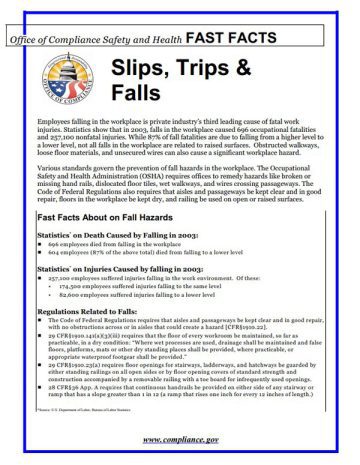Employees falling in the workplace is private industry’s third leading cause of fatal work injuries. Statistics show that in 2003, falls in the workplace caused 696 occupational fatalities and 257,100 nonfatal injuries. While 87% of fall fatalities are due to falling from a higher level to a lower level, not all falls in the workplace are related to raised surfaces. Obstructed walkways, loose floor materials, and unsecured wires can also cause a significant workplace hazard.
Various standards govern the prevention of fall hazards in the workplace. The Occupational Safety and Health Administration (OSHA) requires offices to remedy hazards like broken or missing hand rails, dislocated floor tiles, wet walkways, and wires crossing passageways. The Code of Federal Regulations also requires that aisles and passageways be kept clear and in good repair, floors in the workplace be kept dry, and railing be used on open or raised surfaces.
Fast Facts About on Fall Hazards
Statistics on Death Caused by Falling in 2003:
- 696 employees died from falling in the workplace
- 604 employees (87% of the above total) died from falling to a lower level
Statistics on Injuries Caused by falling in 2003:
- 257,100 employees suffered injuries falling in the work environment. Of these:
- 174,500 employees suffered injuries falling to the same level
- 82,600 employees suffered injuries falling to a lower level
Regulations Related to Falls:
- The Code of Federal Regulations requires that aisles and passageways be kept clear and in good repair, with no obstructions across or in aisles that could create a hazard [CFR§1910.22].
- 29 CFR§1910.141(a)(3)(iii) requires that the floor of every workroom be maintained, so far as practicable, in a dry condition: “Where wet processes are used, drainage shall be maintained and false floors, platforms, mats or other dry standing places shall be provided, where practicable, or appropriate waterproof footgear shall be provided.”

